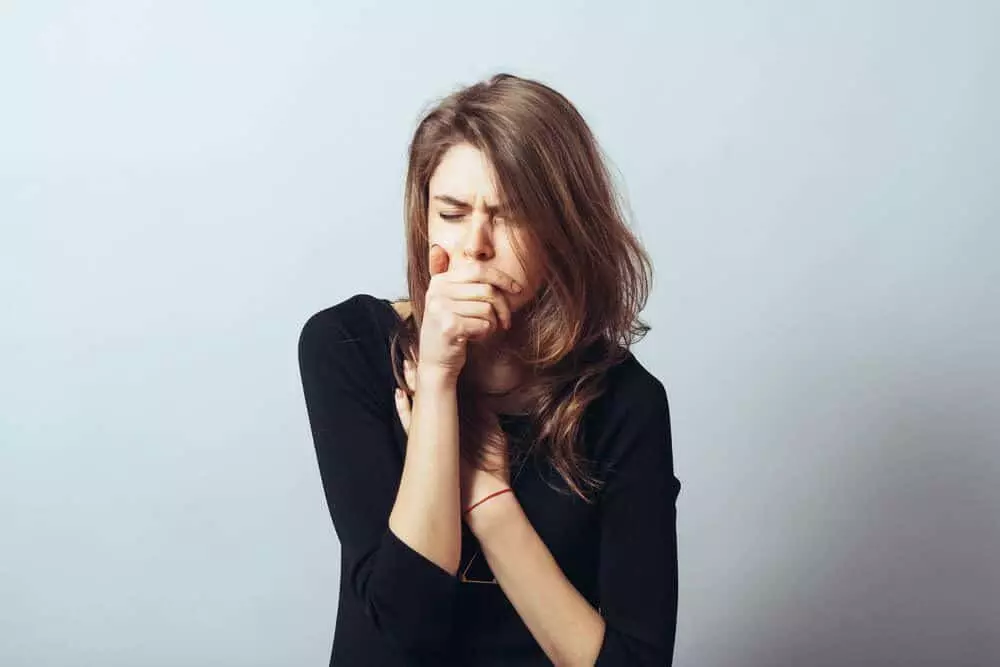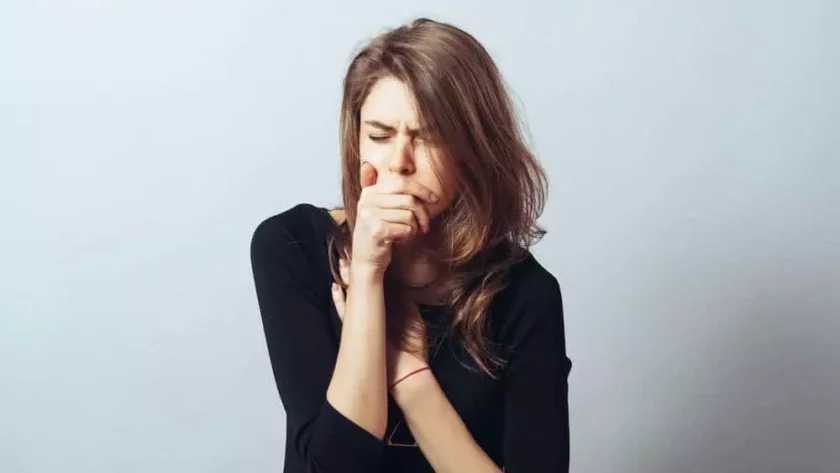OVER VIEW
Contents
Lung infection is one of the most common medical conditions, which affects a huge worldwide population.
And it keeps growing due to one of the major reasons for which is pollution.
It is caused by viruses, bacteria, fungus. And genes and smoking are the most cause of lung diseases.
One of the most common lung infections is pneumonia, which also affects approximately 450 million people worldwide, especially those under 5 years child.
These infections mainly affect include breathing, sinuses, throat, airways, and lungs.
The doctor may prescribe you some antibiotics which usually clear lung infection, but it can be serious If its treatment is left in middle and not taken seriously.

What Causes Lung infection?
Lung infections are especially common and severe among the poor.
When the polluted air, which contains viruses, bacteria, parasites, and fungi, comes in contact with the lungs, then the chances of getting a lung infection are increased.
NOTE: It can also spread from one person to another, by coughing, and sneezing through the air.
Lung infection is more common or these people are more prone to lung infection, comes in the following condition are:
- In children
- Older people, especially after 65 years old
- Smokers and secondhand smoking
- Excessive alcohol use
- Pollution, which is a major reason for a lung infection
- ICU admitted person
- Malnutrition
- Weak immunity, due to any medical conditions such as HIV, diabetes, cancer, etc
- Recent organ transplant
- A history of asthma or allergies
The infection causes the lungs’ air sacs (alveoli) to become inflamed and fills up with fluid or pus. That can make it hard for the oxygen you breathe in to get into your bloodstream.
Types
There are mainly 4 types of lung infection which include viral, bacterial, parasite, and fungal infection.
Viral Infection example – Pneumonia is an infection in the lungs caused by a virus. And covid-19 infection, which is caused by the SARS-COV-2 virus.
Bacteria example – Tuberculosis is a disease caused by Mycobacterium tuberculosis (MTB) bacteria.
Parasite – Pulmonary malaria and Helminths are some common names that cause lung infection.
Fungal infections – Aspergillus, Pneumocystis, and endemic fungi are major pulmonary fungal pathogens that are able to become life-threatening.
NOTE: Pneumonia, bronchitis, and bronchiolitis are the three main lung infections and are usually caused by viruses or bacteria.
Symptoms of lung infection
Its symptoms can be mild to severe, depending on your age and overall health.
And its symptoms can similar to cold and flu, which can go on for a long time.
Here are the symptoms of lung infection. which include:
Cough
A cough that can be both dry and wet, and can last for a long time. There may be blood in the cough along with the mucus.
Mucus may be clear, yellow, green, brown, or rust-colored and may have no odor or a foul odor.
If these symptoms do not go away within 1 week, with normal cough treatment, then get the doctor checked, so it may be a sign of lung infection.
Shortness of Breathing
In this, the person is not able to breathe freely, and chest pain may occur. Tell your doctor before this condition become serious.
Besides lung infection, it can be a sign of many other diseases including a heart attack, because of this, it becomes necessary to diagnose it ahead of time.
Fever
The temperature may be low (less than 100 degrees F), high, or very high. fever occurs due to the body trying to fight off the infection.
These symptoms that can be seen in case of fever are:
Wheezing sound in the chest
If there is an infection in the lungs, the sound of wheezing from the chest is commonly listen.
Because during LI, your airways become inflamed, and due to this they narrow.
And this could lead to wheezing and a whistling sound when you breathe out.
Other symptoms that may occur during lung infection
- Runny nose
- Discomfort in throat
- Headache
- Fatigue
Loss of Smell and Taste
It’s a surprise, but a very number of people who have tested positive for a lung infection may experience a loss of taste or smell.
This is because certain viruses can affect our nasal cavity, which leads to loss of smell, and taste because these both are closely linked.
NOTE: If you see a high temperature, continuous cough, or a loss, and a change in sense of smell or taste, it could be an early sign of COVID-19.
In such a situation, if you do not have any problems, then stay at home and keep yourself in room isolation, make sure you are in touch with a doctor.
Diagnose
To diagnose, the doctor first asks about your symptoms, like blood in mucus is a common question asked by the doctor. And also examine your chest.
Some tests may also be recommended by your doctor for pneumonia, and bronchitis to confirm such as:
- A blood test or culture – Which virus, bacteria, and fungal infection causes your lung infection?
- Chest x-ray
- CT scan – can also show that which cannot be seen in an X-ray.
- Throat swab
- Bronchoscopy -By putting this in your mouth, the doctor checks your lungs and air passages to see if they are swollen and much more.
- Oximeter machine – This machine estimates the amount of oxygen in the blood.
- Complete blood count (CBC)
- Transtracheal sputum – These tests are performed on a mucus sample obtained directly from your windpipe.
If the doctor sees more seriousness in your symptoms, then some other tests may be done which can also be a sign of some other disease.
Treatment of Chest Infection

Its treatment is specific because if a person has Tb then the doctor will give anti-tuberculosis medicines and treat him.
In this way, if someone has a bacterial lung infection, then the doctor may prescribe antibiotics if the fungus is a reason, then anti-fungal medicines to treat it.
Sometimes the body should be given time to fight against the infection. And antibiotics won’t work on viral infections.
Home-Remedies
Most lung infections are treated with medicines, but some home remedies can also help reduce the symptoms and help your heal faster.
- Drink enough water and other fluids
- Get enough rest
- Try hot ginger tea with honey, and tulsi
- Maintain a healthy diet, especially these days
- Avoid unhealthy habits such as smoking, and alcohol, which will make the situation worse
- Take prescription medicine with you in fever time
If doctor’s prescription medicines do not heal your lung infection, and the serious condition persists then you may also need to go to the hospital.
According to a study, a teaspoon of honey may be the safest alternative and also appears to be more effective.
Complications
If a person already suffers from some other type of lung infection or disease like asthma, pneumonia, etc so having an infection can make their condition worse.
- Heart failure
- respiratory failure
- pleural effusion (that is, water coming in the membrane of the lungs)
- empyema (pus formation in the membranes of the lungs)
- COPD in children, viral lung infection in children may also play a vital role in the development of COPD in the future.
All these conditions come under the complications of lung infection.
7. Prevention of lung infection
All types of lung infections cannot be prevented, but you can reduce their risk to a great extent, with the following tips.
- Wear your mask, especially during the covid time, and in a crowded area
- avoid touching your face and mouth
- do not eat other people’s foods with the same utensils
- always wash your hand, before eating
- don’t smoke, and excessive alcohol
In the case of pneumonia, both vaccines are necessary, especially for infants, older people, and those with chronic illnesses.
Important Note
Do not give hot water steam to babies and children as they have soft skin which is prone to burns.
Do not give aspirin to children under 16.
If a high fever in young children or in toddlers persists for more than 24 hours then immediately see the children’s doctor.
And if any other symptoms are visible due to fever, then call the doctor, or call 102. symptoms may occur:
- Confusion
- Difficulty in breathing
- Chest pain
- Any kind of anxiety
- Heavy vomiting
- Dizziness
- Frequent crying in children
- Any other type of discomfort
BOTTOM LINE
Lung infections mainly affect include breathing, sinuses, throat, airways, or lungs.
Pneumonia is the most common lung infection, caused by a virus. And covid-19 infection, which is caused by the SARS-COV-2 virus.
Treatment is specific, because if a person has Tb then the doctor will give anti-tuberculosis medicines and treat him.


